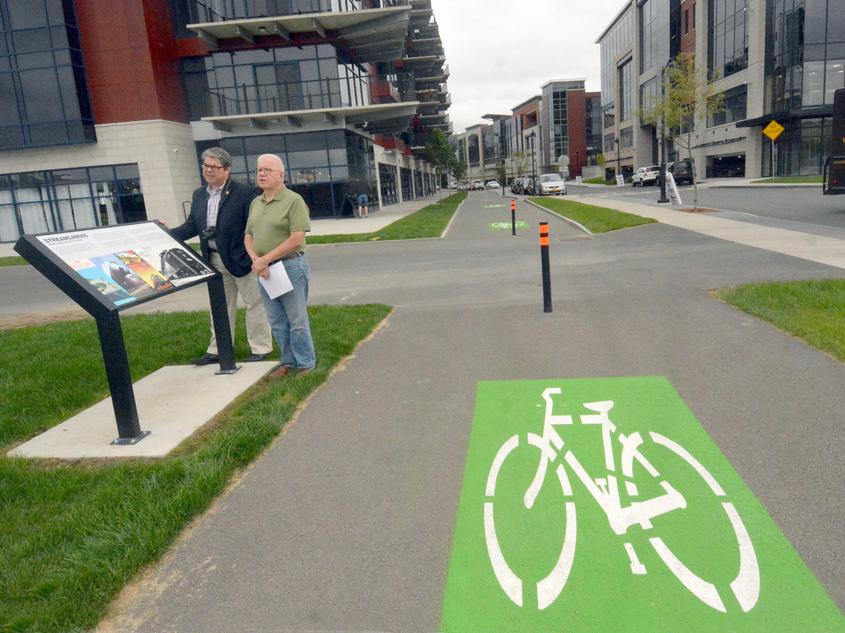New interpretive signs highlight Alco history

SCHENECTADY — The rejuvenated city riverfront where people now live, relax and gamble was once the site of a factory where the biggest locomotives in the world and tanks that helped win World War II were built.
A new set of interpretive signs along the Alco Heritage bicycle trail tells the story of American Locomotive Co., from before its founding in 1847 to its post-World War II decline, to its closure in 1969. The massive industrial buildings remained along a half-mile of Erie Boulevard until 2014, when they were demolished to make way for Mohawk Harbor.
Schenectady County has paid $30,000 for the signs to remind people riding, jogging or walking past the site that the land here has a deep history — and Schenectady was once “The City That Lights and Hauls the World.”
“Sometimes if you push history out into where people live, it sinks in a little,” said Gary Hughes, chairman of the County Legislature’s Economic Development Committee.
The 2-mile bike trail that runs mostly along the Mohawk River from River Street to Maxon Road Extension opened in the spring and ties into the Mohawk Hudson Canalway Trail and the larger regional recreational trail system. It was built at a cost of about $900,000 in state, private and Schenectady Metroplex Authority funds as part of the project that brought Mohawk Harbor and Rivers Casino & Resort to the region.
The new signs became part of the plan along the way. The weather- and graffiti-resistant placards were designed by Paul Singer Design, of Brooklyn, which has also created interpretive signs for the Bronx Zoo, National Park Service, state parks and other entities. Singer also designed the history signs in Vale Cemetery.
Read the full article here.
Williams, Stephen. “New Interpretive Signs Highlight Alco History.” The Daily Gazette, 20 Sept. 2018, dailygazette.com/article/2018/09/20/new-interpretive-signs-highlight-alco-history.
Back To All Posts